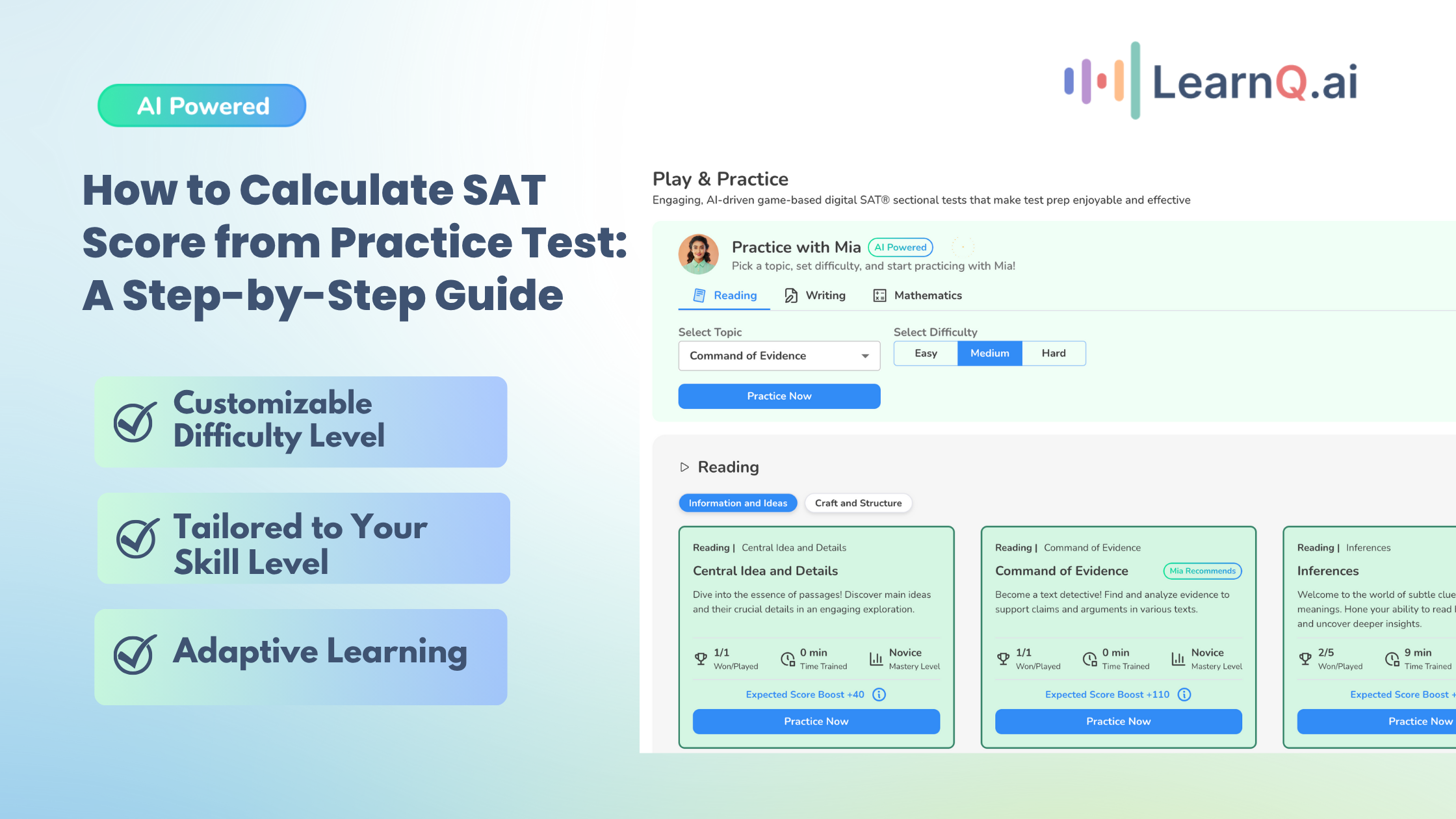If you’ve ever thought, “How can I customize an SAT study plan to fit my schedule?”—you’re not alone. Between school, homework, part-time jobs, and social life, finding time for SAT prep can feel impossible.
The good news? You don’t need 5 hours a day or a rigid routine to succeed. What you need is a smart, flexible plan built around your real life—and this blog will show you how to do it.
Step 1: Know Your Timeline
Start by figuring out your test date and counting how many weeks you have left. Whether it’s 12 weeks or 4, that will help you reverse engineer your prep plan.
Example:
- Test Date: August 24
- Today: June 24
- You have 8 weeks to prepare
Next, decide how many hours you can realistically commit per week—without burning out. Even 3–5 hours/week can lead to strong improvements if used well.
Step 2: Set Your Goal Score (and Your Starting Point)
To build an effective plan, you need to know:
- Where you are now (take a full-length practice test)
- Where you want to go (your goal score)
Example:
- Practice Test Score: 1050
- Goal: 1300
- Gap: 250 points → focus on high-impact skills in Math and Reading
Knowing your gap helps you prioritize what to study.
Step 3: Break Your Week into Mini-Study Blocks
Don’t try to cram SAT prep into big weekend chunks. Instead, break your week into small, focused sessions:
Sample Weekly Study Plan:
- Monday: 30 min vocab + reading drills
- Wednesday: 45 min math practice
- Friday: 30 min grammar & writing
- Sunday: 1 hour full section or practice test
That’s less than 3 hours—but it’s consistent. Custom-fit to your availability.
Step 4: Choose the Right Study Tools
Pick study resources that match your learning style:
- LearnQ.ai – personalized quizzes and AI feedback
- College Board’s Bluebook – official digital SAT tests
- YouTube – visual learners benefit from video explanations
- Flashcards – great for vocab and formulas
Avoid overloading yourself with too many apps or books. Choose 2–3 and stick with them.
Step 5: Build in Flex Days and Adjust as You Go
Life gets busy. That’s why flexibility is key.
Tips:
- Block off one “skip day” each week
- Use weekends for catch-up if you miss a weekday session
- Re-assess your plan every 2–3 weeks and adjust based on what’s working (or not)
You’re not failing if you fall off track—just recenter and keep going.
Step 6: Use Smart Study Techniques
Maximize your time with active learning:
- Review mistakes from past questions
- Focus more on weak areas (don’t avoid them!)
- Use timed practice to mimic real test conditions
- Mix question types so your brain stays sharp
Step 7: Track Your Progress
Use a simple spreadsheet or notes app to track:
- How many hours you study
- Your practice test scores
- What topics you’ve covered
- What still needs improvement
Progress tracking helps you stay motivated and shows you that your effort is paying off.
Final Thoughts
So, how can you customize an SAT study plan to fit your schedule? By being realistic, flexible, and consistent. You don’t need to study like a robot—you just need a plan that fits your life, your pace, and your goals.
Even 30 minutes a day can lead to big results when done right.
Start small. Stay steady. Succeed your way.











